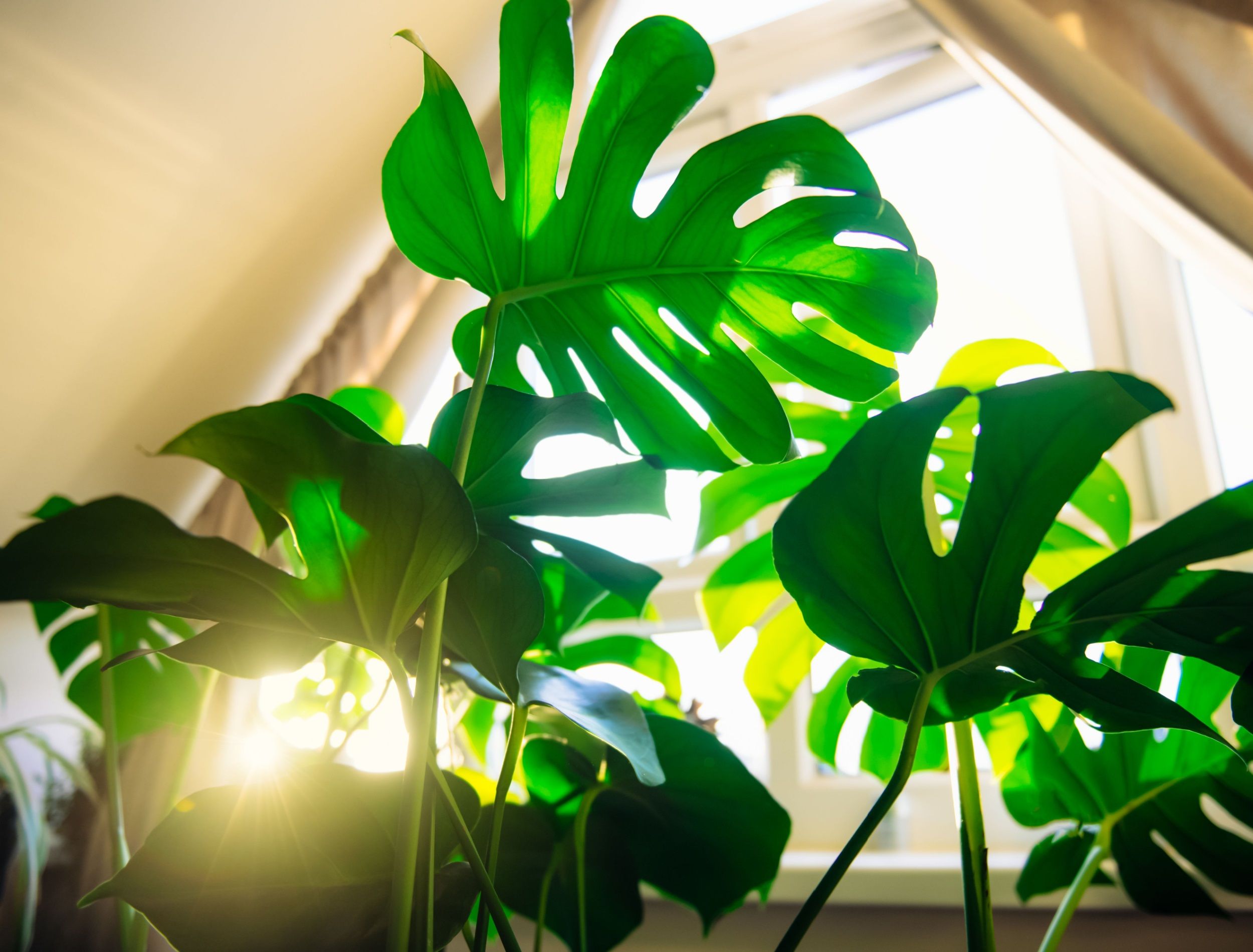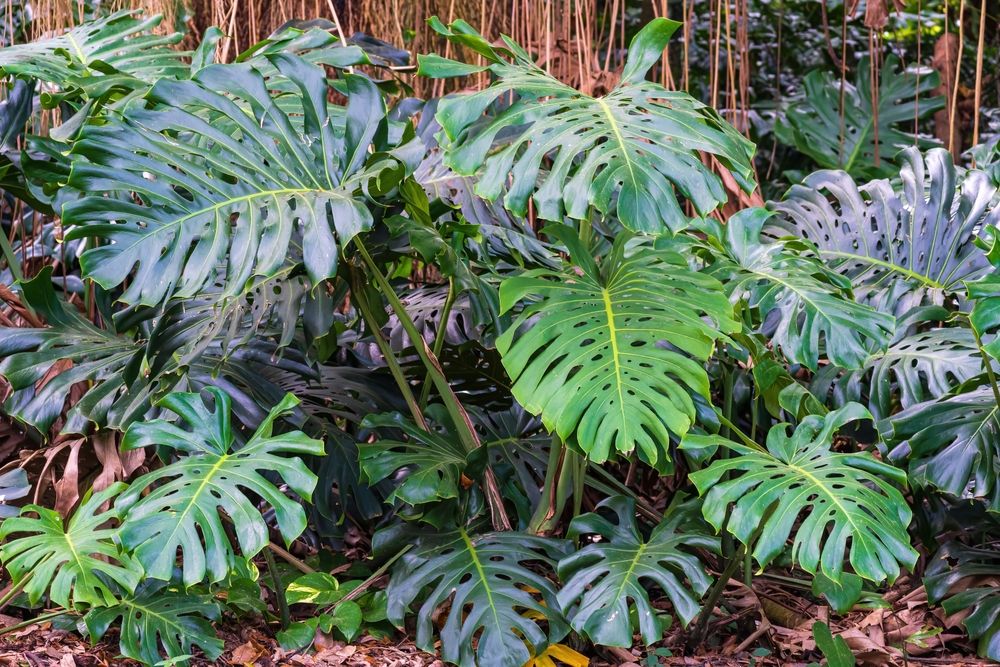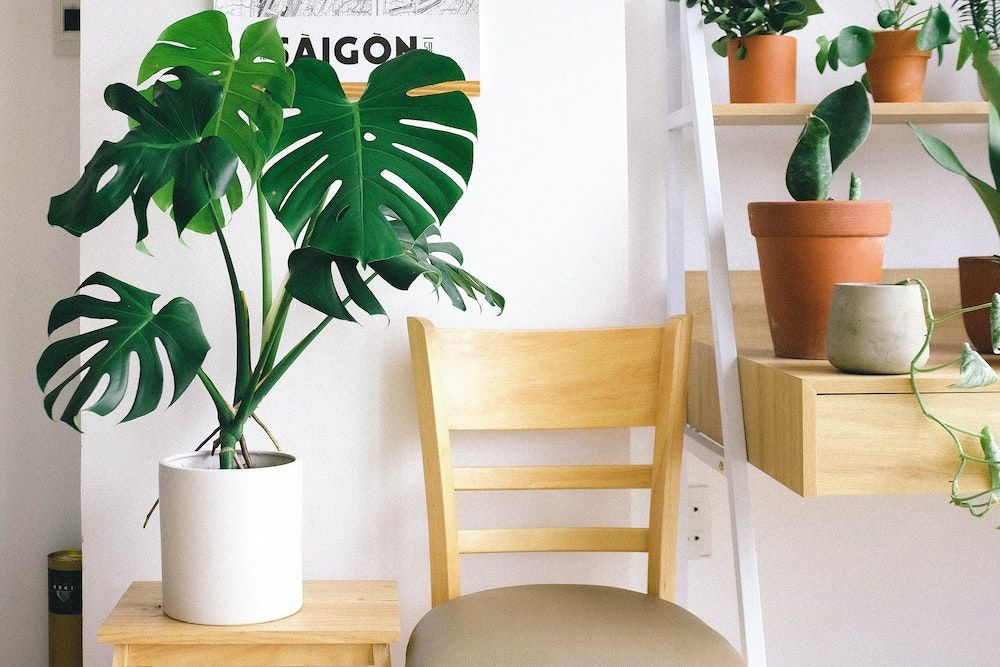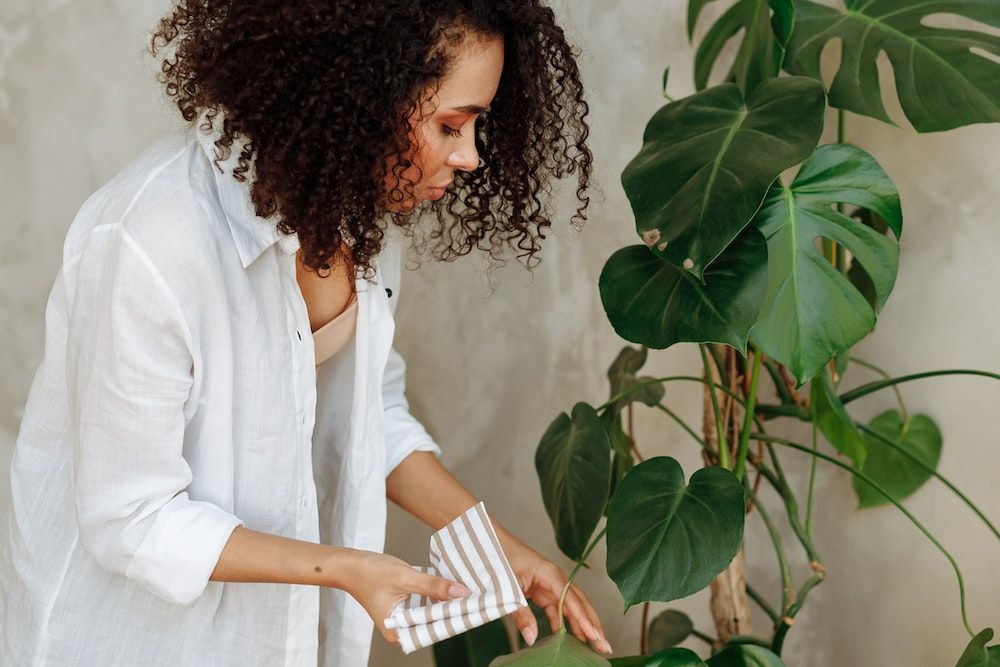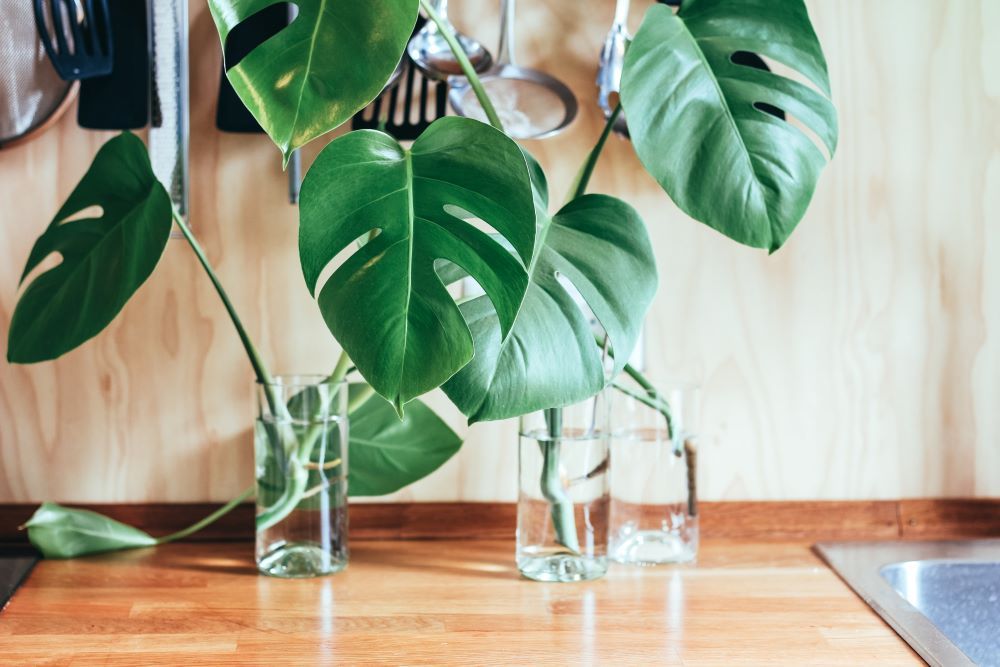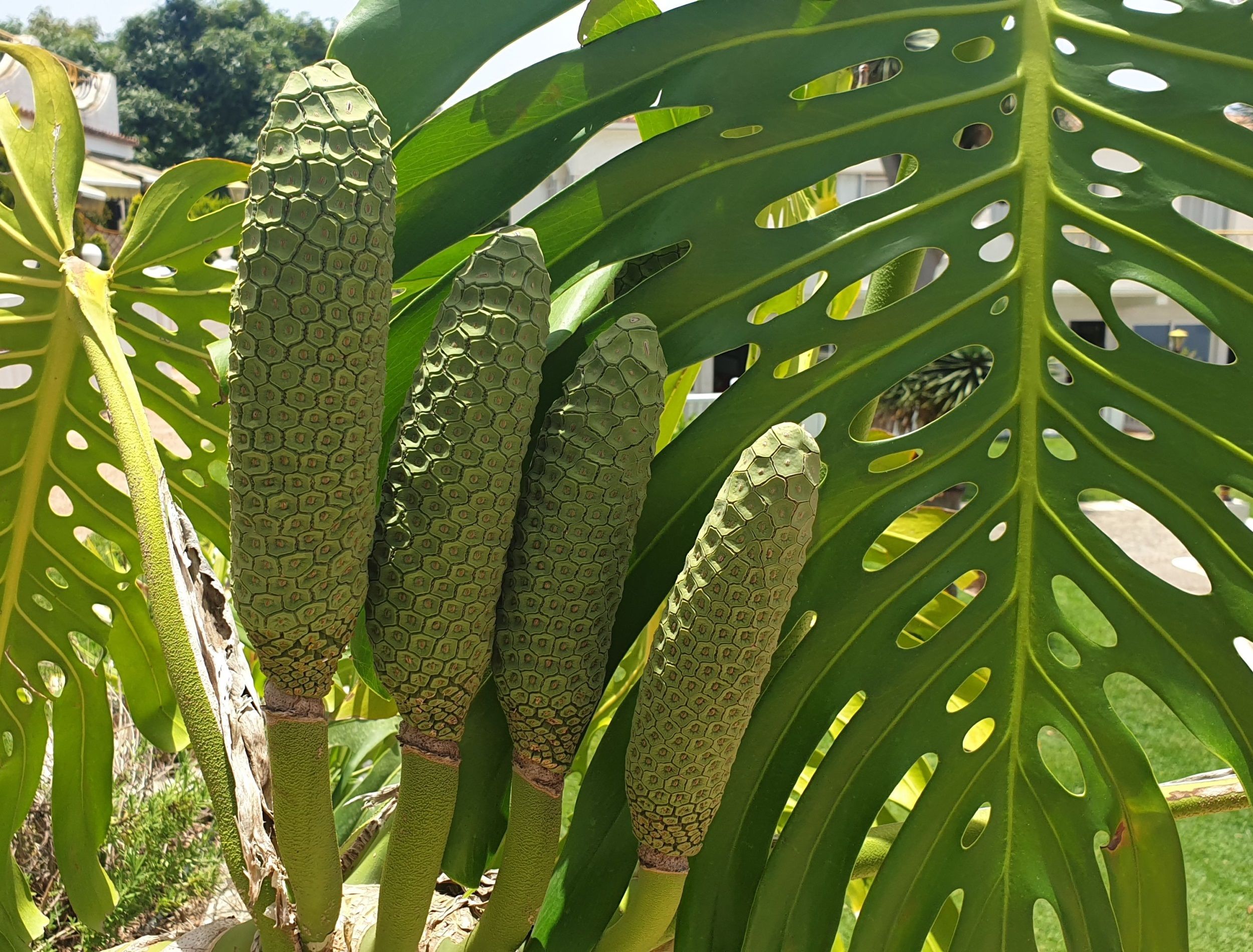One of the most instagrammable houseplants around, monsteras are as beautiful as they are easy to care for. They bring a lot to a space aesthetically as they mature, with those characteristic splits and holes (fenestration) in their leaves.
Monsteras have the ability to bring a lush, tropical ambience to any room as a statement floor plant. This is because they grow quite large in ideal conditions, up to 10 feet tall indoors and reaching towering heights of 70 feet outdoors.
How to Care For a Monstera Plant
Image credits: Sunshower Shots via Shutterstock
There are generally two types of monsteras most commonly seen in homes and for purchase at the garden center. There’s the iconic Monstera deliciosa with its glossy, oval-shaped, dark green leaves.
And then there’s Monstera adansonii, with its more delicate, dainty texture, and heart-shaped leaves.
Both monsteras are vining plants that use aerial roots to clamber up tree branches and trunks in its natural habitat. As it matures, it’s most ideal to train your monstera to climb up a moss pole to help it grow taller.
As for general care, both types of monsteras prefer bright, indirect light with shelter from the scorching hot afternoon sun. The more light you can give your monstera the better, as it will happily develop more fenestration in its mature leaves.
Monsteras also enjoy a humid environment of over 60 percent if possible. Buying a dehumidifier is a quick fix.
When it’s time to water, make sure the top two inches of soil on the plant is dry before giving it a drink. Ensure your monstera gets a thorough watering until the soil is moist but not wet.
If you're not yet convinced, here are some of the benefits of having a monstera plant in your home.
1. Beautiful Addition To Your Home
Image credits: Huy Phan via Pexels
Monsteras, especially Monstera deliciosa, is a dramatic addition to your home in terms of aesthetics. If you’re lucky enough to have a mature monstera, it will be at its best as a floor plant and fill up any corner of the room that gets bright, indirect light.
As it grows to its full potential with the aid of a moss pole, its large leaves effortlessly contribute to your indoor jungle.
According to Feng Shui, Monstera deliciosa brings good luck and positive energy to a space. It’s also known to encourage the likes of expansion and growth, as well as the accumulation of wealth.
The best place to station a plant that brings good luck in the home is either by the front door, or at a window. These key locations help filter out the negative energy and bad vibes that enter the home.
Taking into consideration the principles of Feng Shui, the bedroom is not an ideal place to put a monstera. That’s because the energy that these plants generate may disturb the restfulness that’s needed in the bedroom.
2. Easy To Care For
Image credits: Thirdman via Pexels
Monsteras are relatively easy to care for as a beginner-friendly houseplant, and have similar care needs as most tropicals (care tips below).
They prefer to be in an environment with bright, indirect light, and enjoy being frequently misted. Monsteras are also drought-tolerant and don’t want to be watered until the top soil is dry to the touch.
One of the best things about monsteras is that they’re adept at communicating their needs to plant parents. When they need water, their leaves will become droopy or limp.
3. Plenty To Propagate
Image credits: Brina Blum via Unsplash
Another great benefit of keeping a monstera plant at home is that they’re easy to propagate. With a little patience, you’ll have a brand new monstera plant at home without the extra cost. Monsteras can be propagated by either stem cutting or plant division.
When taking a cutting, ensure there is a node on it as that’s where new roots will form. Place the cutting into water, ensuring the node is fully submerged.
New roots will form in water after two to four weeks, and propagated nodes can take up to two to three months before forming a new leaf.
As for plant division, its best done during the active growing season in the summer months. This is when the monstera plant is more able to recover from root stress.
For the same reason, a good time to divide up your plant is when you're ready to repot it. Take the plant out of the pot and use a sharp, clean knife to divide the monstera into two plants.
Make sure to leave enough roots and stems on the propagated plant before potting it up so it have a better chance.
4. Growing Fruit in Your Home
Image credits: StefanMaximilian via Shutterstock
Another benefit to having Monstera deliciosa in your home is that there's the possibility of it bearing fruit. This is an exciting prospect for all plant parents that enjoy growing food at home.
The fruit of the monstera plant resembles an ear of corn, and tastes like a combination of pineapple or jackfruit.
As a houseplant, monstera is unlikely to bear fruit, unless it's planted outside in a tropical climate similar to Southeast Asia. If you're able to replicate a tropical climate in your home, your monstera might still be able to bear fruit. However, it may still take 12 to 14 months to develop.
Monsteras - The Center of Attention
There are a handful of benefits to having a monstera plant in your home, whether it’s Monstera deliciosa or Monstera adansonii you choose.
These fast-growing vining tropical plants are very beginner-friendly, as long as they have enough bright, indirect light and humidity for them. Besides ease of care, monsteras bring an incredible jungle aesthetic to your home and positive energy to a space according to Feng Shui principles. To top it all off, monsteras are easy to propagate and just require a bit of patience before a brand new leaf unfurls.
It’s obvious why monsteras are a fan favorite of the houseplant community and will continue to be for the years to come. Can you think of more benefits of having a monstera plant in your home? Write them in the comments below, and share this article with your monstera-loving friends.

